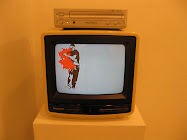7:00 - 7:45pm performance, 7:45 - reception (indoors)
10 donation requested for performers

New Orleans' MARDI GRAS INDIANS
"Mardi Gras Indians--the parade most white people don't see. The ceremonial procession is loose, the parade is not scheduled for a particular time or route...that is up to the Big Chief." - Larry Bannock
Typical Mardi Gras organizations will form a "krewe." A krewe often names their parade after a particular mythological hero or Greek god. The ranking structure of a Mardi Gras Krewe is a parody of royalty: King, Queen, Dukes, Knights and Captains...or some variation on that theme. Many more established Krewes allowed membership by invitation only.
Few in the ghetto felt they could ever participate in the typical New Orleans parade. Historically, slavery and racism were at the root of this cultural separation. The black neighborhoods in New Orleans gradually developed their own style of celebrating Mardi Gras. Their "Krewes" are named for imaginary Indian tribes according to the streets of their ward or gang.
The Mardi Gras Indians named themselves after native Indians to pay them respect for their assistance in escaping the tyranny of slavery. It was often local Indians who accepted slaves into their society when they made a break for freedom. They have never forgotten this support.
In the past, Mardi Gras was a violent day for many Mardi Gras Indians. It was a day often used to settle scores. The police were often unable to intervene due to the general confusion surrounding Mardi Gras events in the city...where the streets were crowded and everyone was masked. This kept many families away from the "parade," and created much worry and concern for a mother whose child wanted to join the "Indians."
We plan to record their drum and dance performance outside (45-50 degrees) then we'll move indoors (72-74 degrees).
Visit http://www.houstonculture.org/indians/index.html for more information.
NOTE: 2008 will be key to our future...
www.arteryhouston.org
5401 Jackson at Prospect (near the Children's Museum) enter on Prospect St.
for more on the history of these performers and their ties to the creole culture, visit HERE.























0 comments:
Post a Comment